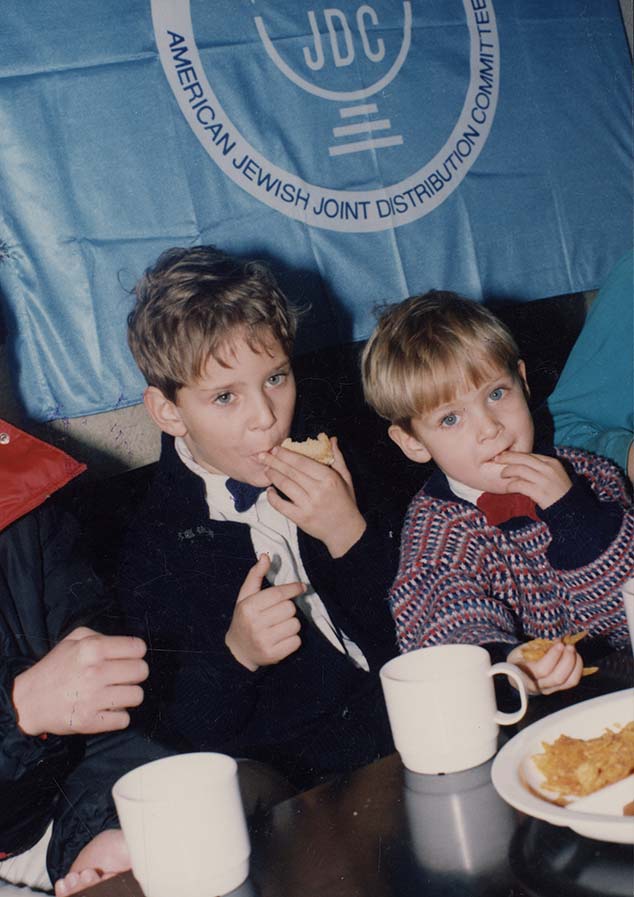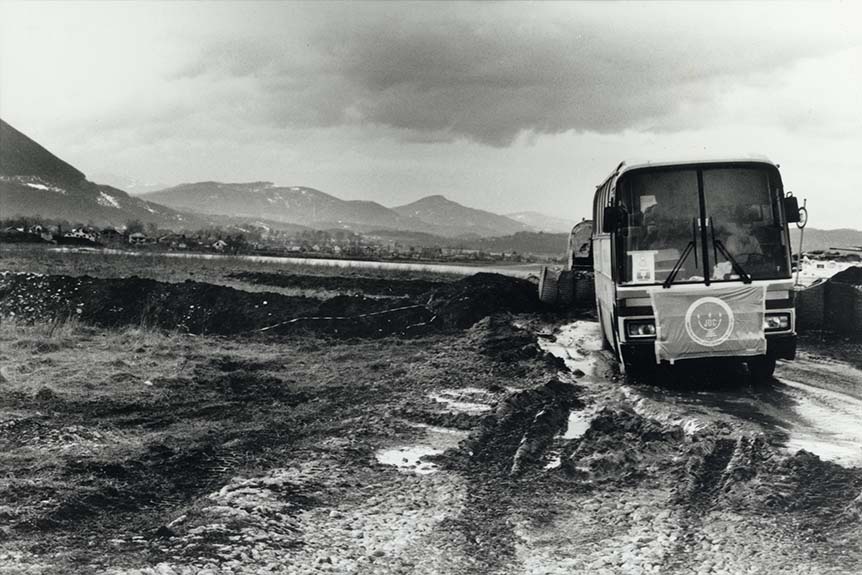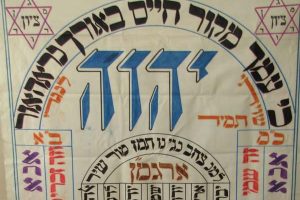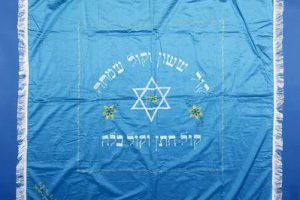
Backdrop to Rescue
JDC banner witnessed historic Sarajevo evacuation
After the outbreak of war in Bosnia and Herzegovina in April 1992, Bosnia and Herzegovina seceded from Yugoslavia. The Sarajevo Jewish community appealed to JDC to organize an immediate evacuation, and JDC responded. With the assistance of Bosnian and Herzegovinian Jewish leaders and La Benevolencija, the Sarajevo Jewish community’s cultural and philanthropic organization, JDC began a series of 11 convoys.
Festooned across the front of one of the buses that evacuated people from the war zone was a blue banner emblazoned with JDC’s logo. This banner was recently unearthed in the JDC Archives warehouse, recalling JDC’s role in the historic operation. With JDC’s help, the convoys succeeded in bringing some 2,300 Serbs, Croats, Muslims, and Jews from Sarajevo to safety in other parts of the former Yugoslavia and beyond.
La Benevolencija continued to receive financial support from JDC throughout the siege and raised additional funds from JDC’s Open Mailbox for Yugoslavia, relief organizations, and governments around the world to send over 1,500 tons of clothing, food, and medicine into Bosnia and Belgrade. JDC also provided aid to the transmigrants, so the banner continued to act as a backdrop for other events in the lives of the Sarajevo Jewish community. It saw children, whose lives had been upended, receive toys and food, which allowed for moments of comradery and calm.
The banner also watched people of different faiths come together for an interfaith seder in 1993. It was important for the Sarajevo Jewish populace to perpetuate their 500-year-old community and continue to provide aid to their Christian and Muslim neighbors. Therefore, an interfaith seder functioned as a symbol of support for all those under siege. Present at the seder were the President of Bosnia and JDC’s executive vice-president, Michael Schneider, who journeyed through siege lines to attend. They joined with the heads of three major religious communities and 250 Jewish participants. JDC was a partner in helping the community achieve this goal and the banner proudly furnished some scenery.
This banner accompanied the Sarajevo Jewish community through heartbreak and happiness and served as a reminder that JDC was there. It witnessed the centuries-old community continue to flourish and assist its neighbors even while experiencing turmoil. Most importantly, the banner, much like JDC, moved alongside the community to designate space for tradition, respite, and joy, no matter the circumstances.
Although flags and banners are routinely used in messaging and advertising, this banner’s presence at historic occasions transformed it from simply a representation of JDC’s involvement. The photographic evidence we have of it attending important events elevates its status to that of organizational heirloom. With each experience, the banner absorbed a bit of JDC and Jewish history. This unspoken understanding prompted someone affiliated with JDC to bring it home and tuck it away in the Archives.







